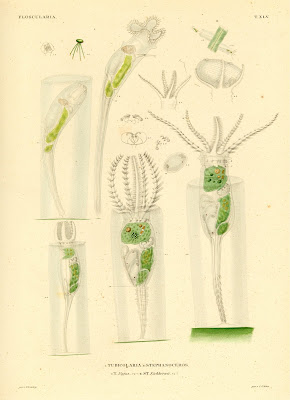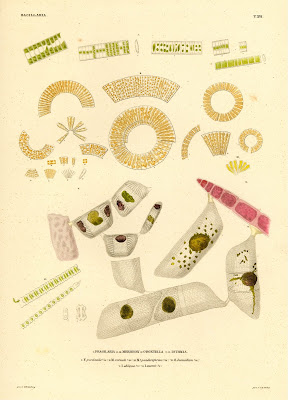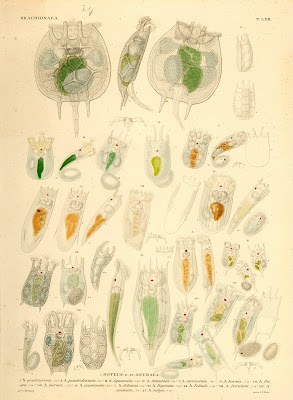













One of the sweetly sad pleasures of casually trawling the history of science literature is discovering works and characters of incredible depth and diversity that are not widely known. One of these prolific and brilliant pioneers is Christian Gottfried Ehrenberg who might otherwise be described as a microscopist extraordinaire.
He released 2 great monographs which basically divide between the living and non-living worlds examined under magnification during the 19th century. I have previously posted about the non-living: the microgeological and fossil samples Ehrenberg assiduously examined and recorded that gave rise to a new field within paleontology.
The wonderfully alien images above (and in the following post) come from his earlier 1838 treatise, 'Die Infusionsthierchen als Vollkomene Organismen', in which he identified a large number of unicellular organisms, particularly from the protist diatoms, and chief among them the radiolarians.
The Humboldt University Museum für Naturkunde have a large selection online from the enormous quantity of written and illustrated material Ehrenberg left behind. I have still not properly examined the contents. There is a very good reason for this: all of the images are huge, averaging around 10Mb each, with no thumbnails available. So although you will find much larger versions if you click on the images here, they have had to be scaled down substantially.
Unsurprisingly, Ernst Haeckel, who shared a common interest in radiolaria, is featured haphazardly in the Museum collection. The image and details below were only identified as: 'Haeckel, 1865, plate 1.' I don't think that particular double page illustration has been posted elsewhere.
- A wealth of Radiolaria links.
- The web archive version of a Palynology article on Ehrenberg (the original site which I linked last time appears to be dead).








No comments:
Post a Comment